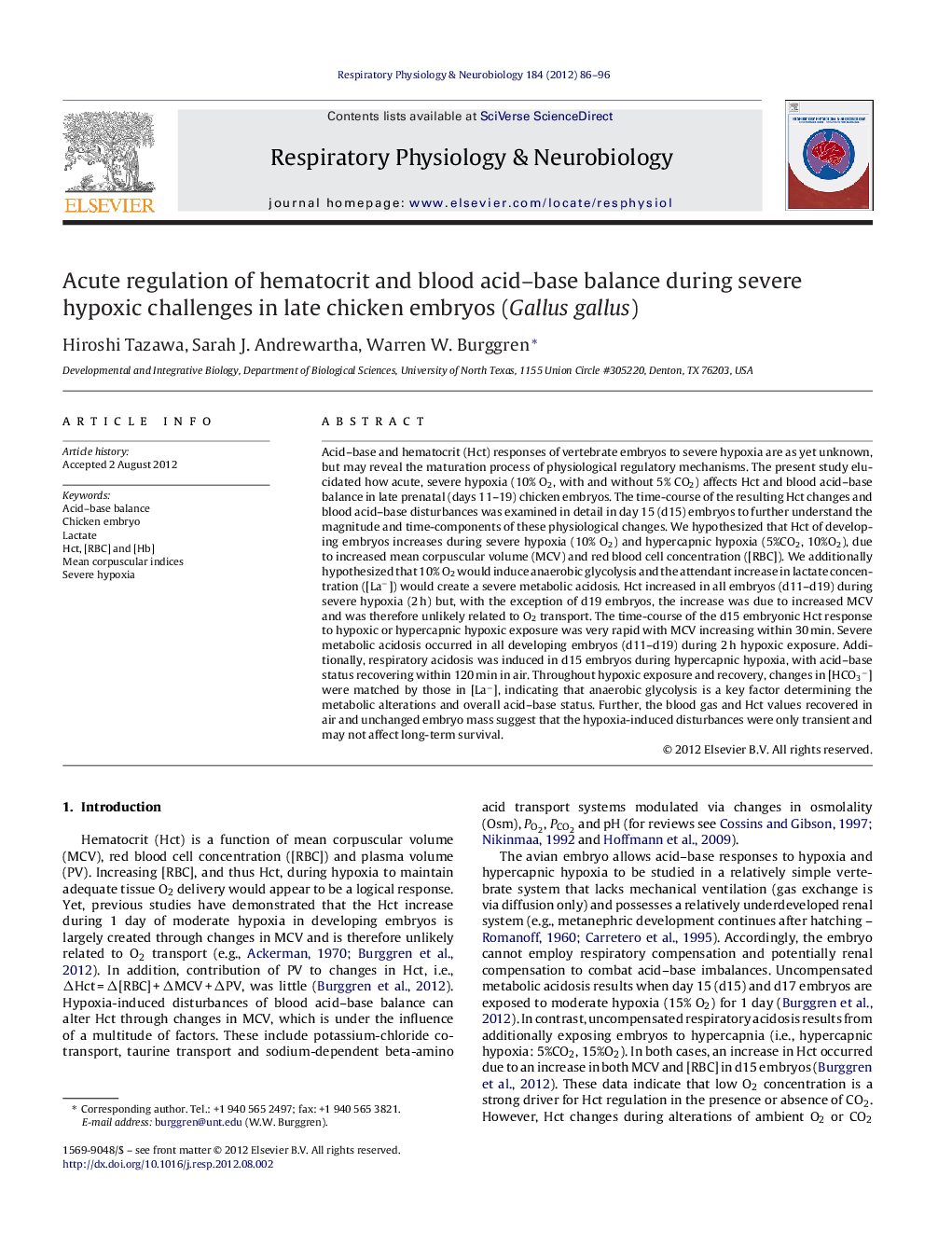| کد مقاله | کد نشریه | سال انتشار | مقاله انگلیسی | نسخه تمام متن |
|---|---|---|---|---|
| 5926301 | 1167352 | 2012 | 11 صفحه PDF | دانلود رایگان |

Acid-base and hematocrit (Hct) responses of vertebrate embryos to severe hypoxia are as yet unknown, but may reveal the maturation process of physiological regulatory mechanisms. The present study elucidated how acute, severe hypoxia (10% O2, with and without 5% CO2) affects Hct and blood acid-base balance in late prenatal (days 11-19) chicken embryos. The time-course of the resulting Hct changes and blood acid-base disturbances was examined in detail in day 15 (d15) embryos to further understand the magnitude and time-components of these physiological changes. We hypothesized that Hct of developing embryos increases during severe hypoxia (10% O2) and hypercapnic hypoxia (5%CO2, 10%O2), due to increased mean corpuscular volume (MCV) and red blood cell concentration ([RBC]). We additionally hypothesized that 10% O2 would induce anaerobic glycolysis and the attendant increase in lactate concentration ([Laâ]) would create a severe metabolic acidosis. Hct increased in all embryos (d11-d19) during severe hypoxia (2Â h) but, with the exception of d19 embryos, the increase was due to increased MCV and was therefore unlikely related to O2 transport. The time-course of the d15 embryonic Hct response to hypoxic or hypercapnic hypoxic exposure was very rapid with MCV increasing within 30Â min. Severe metabolic acidosis occurred in all developing embryos (d11-d19) during 2Â h hypoxic exposure. Additionally, respiratory acidosis was induced in d15 embryos during hypercapnic hypoxia, with acid-base status recovering within 120Â min in air. Throughout hypoxic exposure and recovery, changes in [HCO3â] were matched by those in [Laâ], indicating that anaerobic glycolysis is a key factor determining the metabolic alterations and overall acid-base status. Further, the blood gas and Hct values recovered in air and unchanged embryo mass suggest that the hypoxia-induced disturbances were only transient and may not affect long-term survival.
⺠We studied how 10% hypoxia with or without 5%CO2 affects acid-base balance and Hct. ⺠Acute (2 h) hypoxia caused severe metabolic acidosis in days 11-19 chick embryos. ⺠Attendant rapid increase in Hct was due to increased cell volume except d19 embryos. ⺠Throughout hypoxia and recovery (2 h), changes in [HCO3â] were matched by [Laâ]. ⺠Hypoxia-induced disturbances of acid-base balance and Hct were only transient.
Journal: Respiratory Physiology & Neurobiology - Volume 184, Issue 1, 15 October 2012, Pages 86-96